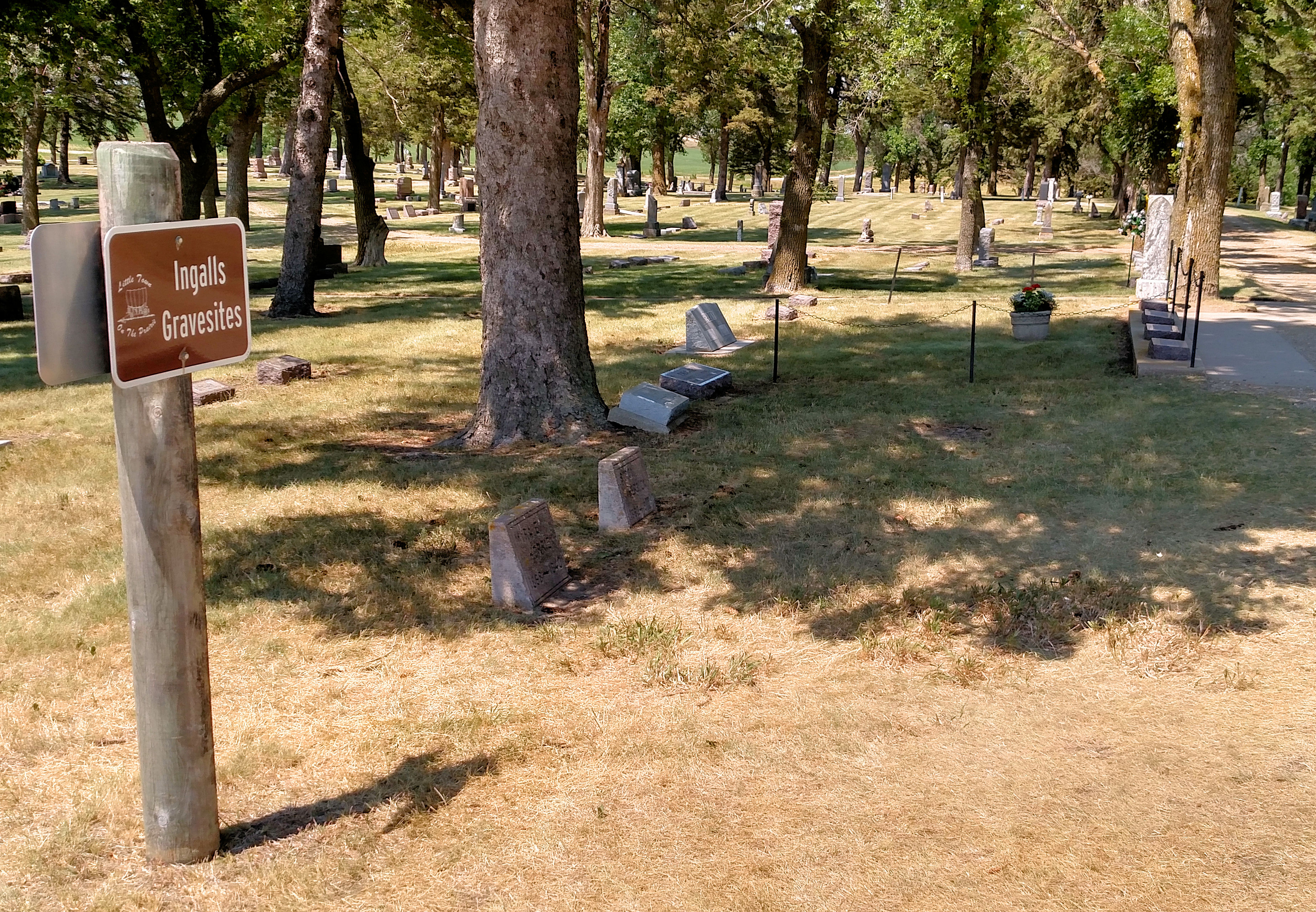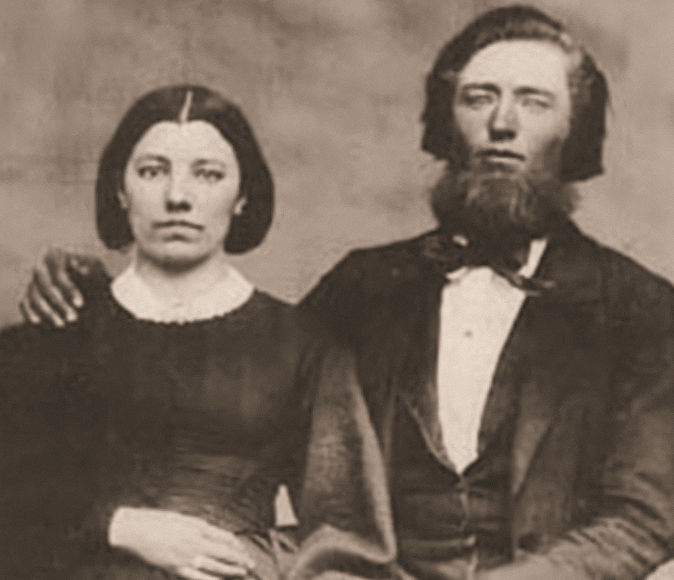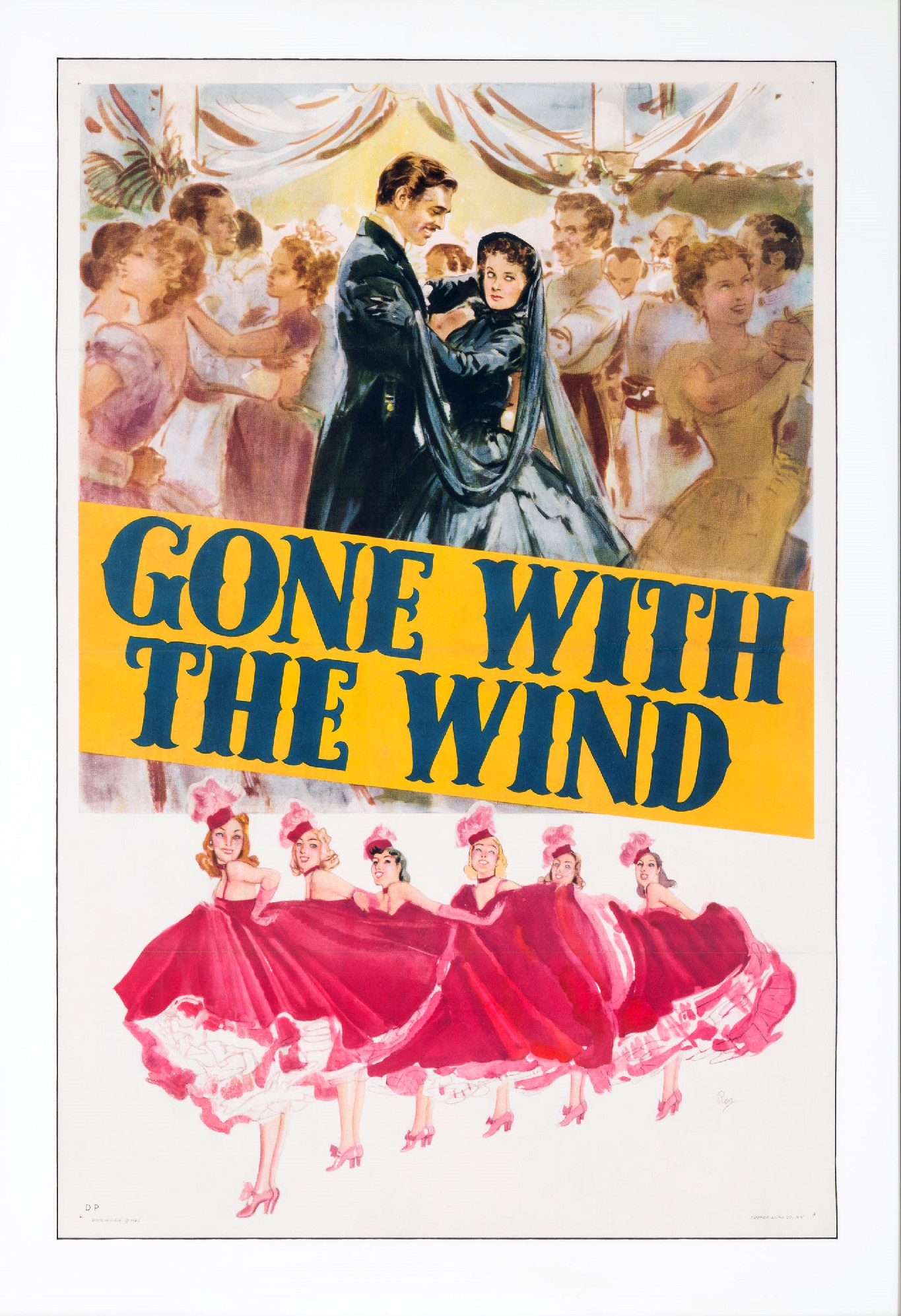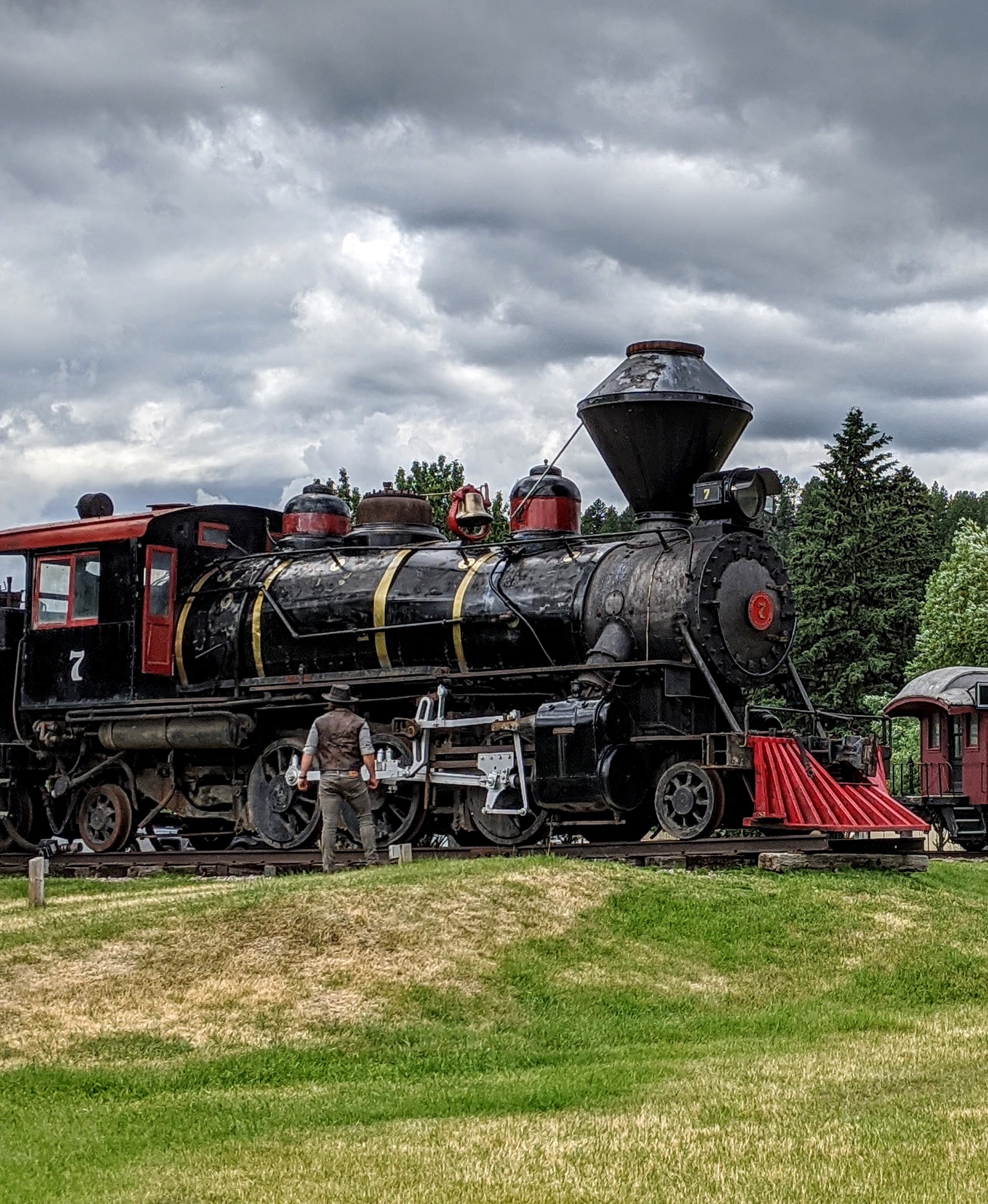|
Keystone, South Dakota
Keystone is a town in the Black Hills region of Pennington County, South Dakota, United States. The population was 240 at the 2020 census. It had its origins in 1883 as a mining town, and has since transformed itself into a resort town, serving the needs of the millions of visitors to the Mount Rushmore National Memorial, which is located just beyond the town limits. Keystone was heavily damaged in the 1972 Black Hills flood. The town took its name from a local mine, which most likely was named after the keystone Masonic symbol. Geography Keystone is located at . According to the United States Census Bureau, the town has a total area of , all land. Keystone has been assigned the ZIP code 57751 and the FIPS place code 33820. Demographics 2010 census At the 2010 census there were 337 people, 153 households, and 81 families living in the town. The population density was . There were 230 housing units at an average density of . The racial makeup of the town was 93.8% White, ... [...More Info...] [...Related Items...] OR: [Wikipedia] [Google] [Baidu] |
Town
A town is a human settlement. Towns are generally larger than villages and smaller than cities, though the criteria to distinguish between them vary considerably in different parts of the world. Origin and use The word "town" shares an origin with the German word , the Dutch word , and the Old Norse . The original Proto-Germanic word, *''tūnan'', is thought to be an early borrowing from Proto-Celtic *''dūnom'' (cf. Old Irish , Welsh ). The original sense of the word in both Germanic and Celtic was that of a fortress or an enclosure. Cognates of ''town'' in many modern Germanic languages designate a fence or a hedge. In English and Dutch, the meaning of the word took on the sense of the space which these fences enclosed, and through which a track must run. In England, a town was a small community that could not afford or was not allowed to build walls or other larger fortifications, and built a palisade or stockade instead. In the Netherlands, this space was a garden, mor ... [...More Info...] [...Related Items...] OR: [Wikipedia] [Google] [Baidu] |
FIPS Place Code
The Federal Information Processing Standards (FIPS) of the United States are a set of publicly announced standards that the National Institute of Standards and Technology (NIST) has developed for use in computer systems of non-military, American government agencies and contractors. FIPS standards establish requirements for ensuring computer security and interoperability, and are intended for cases in which suitable industry standards do not already exist. Many FIPS specifications are modified versions of standards the technical communities use, such as the American National Standards Institute (ANSI), the Institute of Electrical and Electronics Engineers (IEEE), and the International Organization for Standardization (ISO). Specific areas of FIPS standardization The U.S. government has developed various FIPS specifications to standardize a number of topics including: * Codes, e.g., FIPS county codes or codes to indicate weather conditions or emergency indications. In 1994, Natio ... [...More Info...] [...Related Items...] OR: [Wikipedia] [Google] [Baidu] |
De Smet, South Dakota
De Smet is a city in and the county seat of Kingsbury County, South Dakota, United States. The population was 1,089 at the 2010 census. History Located in the area of South Dakota known as "East River" (east of the Missouri River, which diagonally divides the state), De Smet was platted by European Americans in 1880. It was named for Belgian Father Pierre De Smet, a 19th-century Jesuit missionary who worked with Native Americans in the United States and its territories for most of his life. In the mid 1880s, prairie fires and failures of crops after a three-year period of drought caused many settlers to relocate their farms and homesteads to easier areas. By 1917, De Smet was a cow town, with many trains passing through every day carrying cattle to market. The Charles Ingalls family, originally of Wisconsin, arrived in De Smet in 1879. Their travels and pioneer life in Minnesota, Kansas, Dakota Territory, and Iowa would be later chronicled in the '' Little House'' series of b ... [...More Info...] [...Related Items...] OR: [Wikipedia] [Google] [Baidu] |
Mary Ingalls
Mary Amelia Ingalls (January 10, 1865 – October 20, 1928) was born near the town of Pepin, Wisconsin. She was the first child of Caroline and Charles Ingalls and older sister of author Laura Ingalls Wilder, known for her '' Little House'' book series. Biography Mary Ingalls was born January 10, 1865. At age 14, Ingalls suffered an illness – allegedly scarlet fever – thought at the time to cause her blindness. A 2013 medical study concluded that viral encephalitis actually stole her eyesight, based on evidence from first-hand accounts and newspaper reports of her illness, as well as relevant school registries, and epidemiologic data on blindness and infectious diseases. Between 1881 and 1889, Ingalls attended the Iowa Braille and Sight Saving School in Vinton, Iowa. The historical record doesn't show why Ingalls did not attend school during one year of that time, but she did finish the seven-year course of study in 1889 and graduated. She then returned home to her parents ... [...More Info...] [...Related Items...] OR: [Wikipedia] [Google] [Baidu] |
Laura Ingalls Wilder
Laura Elizabeth Ingalls Wilder (February 7, 1867 – February 10, 1957) was an American writer, mostly known for the ''Little House on the Prairie'' series of children's books, published between 1932 and 1943, which were based on her childhood in a settler and American pioneer, pioneer family. The television series ''Little House on the Prairie (TV series), Little House on the Prairie'' (1974–1983) was loosely based on the books, and starred Melissa Gilbert as Laura and Michael Landon as her father, Charles Ingalls. Birth and ancestry Laura Elizabeth Ingalls was born to Charles Ingalls, Charles Phillip and Caroline Ingalls, Caroline Lake (née Quiner) Ingalls on February 7, 1867. At the time of Ingalls' birth, the family lived seven miles north of the village of Pepin, Wisconsin, in the Big Woods region of Wisconsin. Ingalls' home in Pepin became the setting for her first book, ''Little House in the Big Woods (1932).'' She was the second of five children, following older s ... [...More Info...] [...Related Items...] OR: [Wikipedia] [Google] [Baidu] |
Little House On The Prairie
The ''Little House on the Prairie'' books is a series of American children's novels written by Laura Ingalls Wilder (b. Laura Elizabeth Ingalls). The stories are based on her childhood and adolescence in the Midwestern United States, American Midwest (Wisconsin, Kansas, Minnesota, South Dakota, and Missouri) between 1870 and 1894. Eight of the novels were completed by Wilder, and published by Harper & Brothers in the 1930s and 1940s, during her lifetime. The name "Little House" appears in the first and third novels in the series, while the third is identically titled ''Little House on the Prairie (novel), Little House on the Prairie''. The second novel, meanwhile, was about her husband's childhood. The first draft of a ninth novel was published posthumously in 1971 and is commonly included in the series. A tenth book, the non-fiction ''On the Way Home'', is Laura Ingalls Wilder's diary of the years after 1894, when she, her husband and their daughter moved from De Smet, South Da ... [...More Info...] [...Related Items...] OR: [Wikipedia] [Google] [Baidu] |
Carrie Ingalls
Caroline Celestia Ingalls Swanzey (; August 3, 1870 – June 2, 1946) was the third child of Charles and Caroline Ingalls, and was born in Montgomery County, Kansas. She was a younger sister of Laura Ingalls Wilder, who is known for her '' Little House'' books. Biography Carrie Ingalls Swanzey was described as small, thin and frail, and, according to Laura's books, suffered the most of all the Ingalls family members through the deprivations of the hard winter of 1880–1881. Carrie was not constantly ill, but she never enjoyed robust physical health during her life. She traveled to several places in her young adulthood seeking a more comfortable climate, including Colorado and Wyoming. During her late-teen years Carrie was a typesetter for the ''De Smet News'' and, subsequently, other newspapers throughout the state for Edward Louis Senn. She settled in Keystone in 1911. In 1912, she married widower David N. Swanzey, who is best-remembered for his part in the naming of Mount ... [...More Info...] [...Related Items...] OR: [Wikipedia] [Google] [Baidu] |
House Of Wax (1953 Film)
''House of Wax'' is a 1953 American period mystery-horror film directed by Andre DeToth. A remake by Warner Bros. of their 1933 film ''Mystery of the Wax Museum'', it stars Vincent Price as a disfigured sculptor who repopulates his destroyed wax museum by murdering people and using their wax-coated remains as displays. The film premiered in New York on April 10, 1953, and had a general release on April 25, making it the first 3D film with stereophonic sound to be presented in a regular theater and the first color 3D feature film from a major American studio (Columbia Pictures' ''Man in the Dark'', the first major-studio black-and-white 3D feature, premiered two days before ''House of Wax''). In 1971, the film was re-released to theaters in 3D with a full advertising campaign. Newly struck prints of the film in Chris Condon's single-strip StereoVision 3D format were used for this release. Another major re-release occurred during the 3D boom of the early 1980s. Warner Bros. releas ... [...More Info...] [...Related Items...] OR: [Wikipedia] [Google] [Baidu] |
Gone With The Wind (film)
''Gone with the Wind'' is a 1939 American epic historical romance film adapted from the 1936 novel by Margaret Mitchell. The film was produced by David O. Selznick of Selznick International Pictures and directed by Victor Fleming. Set in the American South against the backdrop of the American Civil War and the Reconstruction era, the film tells the story of Scarlett O'Hara ( Vivien Leigh), the strong-willed daughter of a Georgia plantation owner, following her romantic pursuit of Ashley Wilkes (Leslie Howard), who is married to his cousin, Melanie Hamilton (Olivia de Havilland), and her subsequent marriage to Rhett Butler (Clark Gable). The film had a troubled production. The start of filming was delayed for two years until January 1939 because of Selznick's determination to secure Gable for the role of Rhett. The role of Scarlett was difficult to cast, and 1,400 unknown women were interviewed for the part. The original screenplay by Sidney Howard underwent many revisions ... [...More Info...] [...Related Items...] OR: [Wikipedia] [Google] [Baidu] |
Steam Locomotive
A steam locomotive is a locomotive that provides the force to move itself and other vehicles by means of the expansion of steam. It is fuelled by burning combustible material (usually coal, oil or, rarely, wood) to heat water in the locomotive's boiler to the point where it becomes gaseous and its volume increases 1,700 times. Functionally, it is a steam engine on wheels. In most locomotives, the steam is admitted alternately to each end of its cylinders, in which pistons are mechanically connected to the locomotive's main wheels. Fuel and water supplies are usually carried with the locomotive, either on the locomotive itself or in a tender coupled to it. Variations in this general design include electrically-powered boilers, turbines in place of pistons, and using steam generated externally. Steam locomotives were first developed in the United Kingdom during the early 19th century and used for railway transport until the middle of the 20th century. Richard Trevithick ... [...More Info...] [...Related Items...] OR: [Wikipedia] [Google] [Baidu] |
Black Hills Central Railroad
The Black Hills Central Railroad is a heritage railroad that operates in Keystone, South Dakota, United States. The railroad was added to the National Register of Historic Places on February 5, 2003. It currently operates the ''1880 Train'' on the former Keystone Branch of the Burlington Northern Railroad (BN) between Hill City, South Dakota and Keystone, South Dakota. This railroad line was originally built by the Chicago, Burlington and Quincy Railroad (CB&Q) to serve mining and timber interests in the Black Hills. It reached Keystone on January 20, 1900 and was later used to haul equipment for carving nearby Mount Rushmore. The Black Hills Central Railroad restores early twentieth century-era locomotives and train cars and has been featured on television shows such as the '' Gunsmoke'' episode "Snow Train", '' General Hospital'' and the TNT mini-series '' Into the West''. It also appeared in the movie ''Orphan Train''. Trains operate between early May and early October ov ... [...More Info...] [...Related Items...] OR: [Wikipedia] [Google] [Baidu] |
Poverty Line
The poverty threshold, poverty limit, poverty line or breadline is the minimum level of income deemed adequate in a particular country. The poverty line is usually calculated by estimating the total cost of one year's worth of necessities for the average adult.Poverty Lines – Martin Ravallion, in The New Palgrave Dictionary of Economics, 2nd Edition, London: Palgrave Macmillan The cost of housing, such as the rent for an apartment, usually makes up the largest proportion of this estimate, so economists track the real estate market and other housing cost indicators as a major influence on the poverty line. Individual factors are often used to account for various circumstances, such as whether one is a parent, elderly, a child, married, etc. The poverty threshold may be adjusted annually. In practice, like the definition of poverty, the official or common understanding of the poverty line is significantly higher in developed countries than in developing countries. In October 20 ... [...More Info...] [...Related Items...] OR: [Wikipedia] [Google] [Baidu] |
.jpg)






